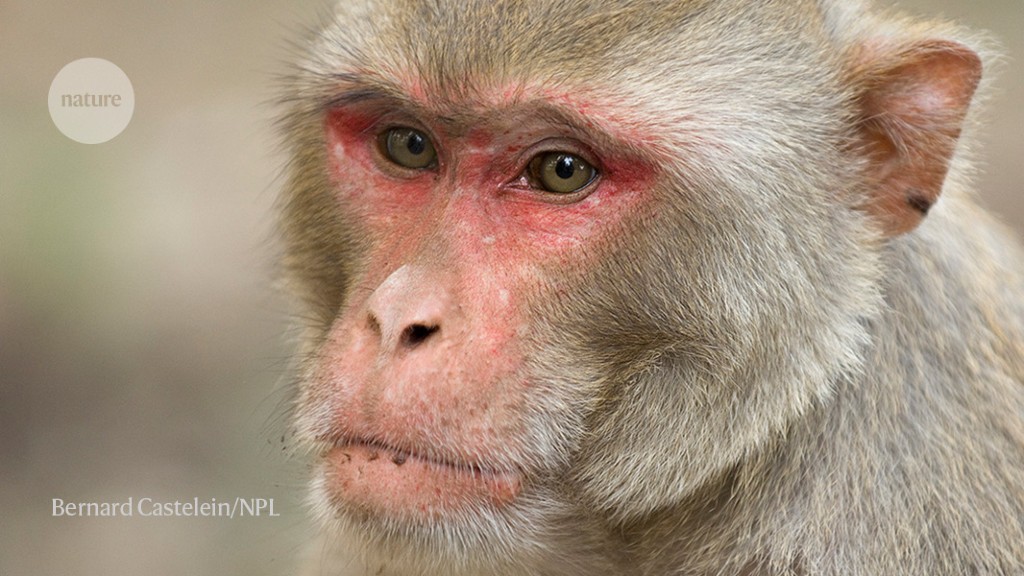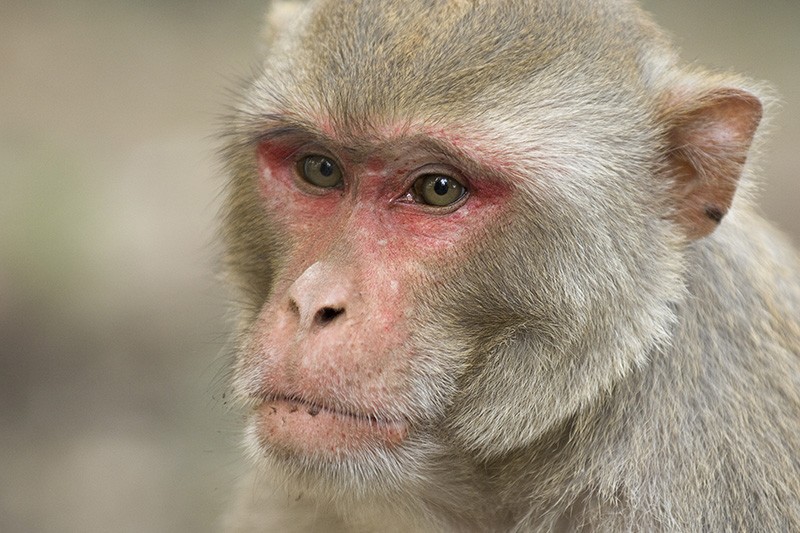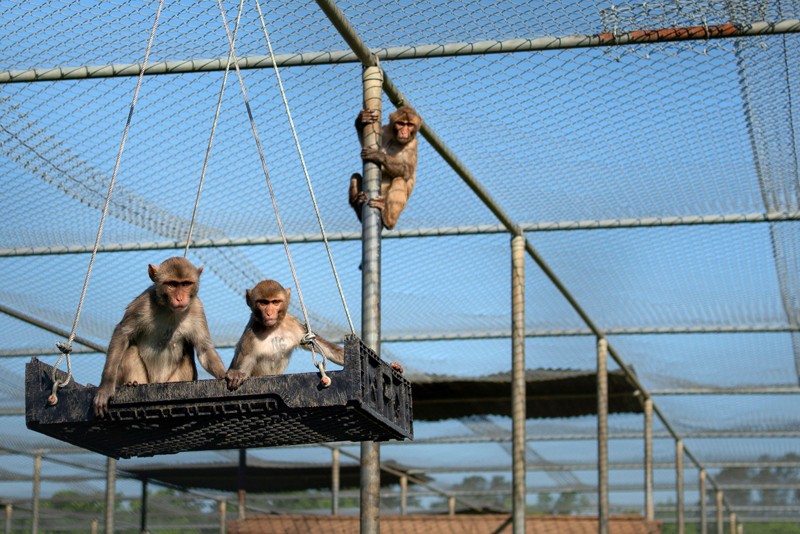The US government is investing heavily to breed more monkeys at the national facilities that house primates for biomedical research, Nature has learnt. The goal is to offset an ongoing shortage of these animals, which grew worse in 2020 as scientists tested scores of COVID-19 vaccines and treatments on primates before trials began in people.
To make room for more monkeys, the US National Institutes of Health (NIH) has invested about US$29 million over the past two years in refurbishing housing, building outdoor enclosures and making other infrastructure improvements at the US National Primate Research Centers (NPRCs), which it funds. The agency is expecting to spend another $7.5 million or so by October. And US President Joe Biden’s administration has proposed investing even more: citing the pandemic, it suggests a 27% increase in funding for the NPRCs in its budget request for fiscal year 2022. If approved by Congress, that would add $30 million for the centres.
“We have been making investments to bring the levels up and to plan for the future,” says James Anderson, director of the NIH Division of Program Coordination, Planning, and Strategic Initiatives in Bethesda, Maryland. “What happens if [a pandemic] happens again, with another virus in three years? We want to be ready for that.”
US scientists use non-human primates, most commonly rhesus macaques (Macaca mulatta), to study a range of medical conditions, including infectious diseases. Genetically and physiologically similar to people, primate models offer a way to run tests and experiments before human trials or when human trials are not possible. In 2019, US scientists used 68,257 non-human primates in research, according to the US government.
“A couple of years ago, we were feeling the pinch,” says Nancy Haigwood, director of the Oregon NPRC in Beaverton, which houses about 5,000 non-human primates. But owing to the pandemic, “we are truly out of animals”, she says. “We’re turning away everyone.”
Experts say the new financing is a step in the right direction, but it will take a bigger investment to fully address the shortage.
“It’s very encouraging to see the Biden administration make an investment in the future of primate research in the US,” says Matthew Bailey, president of the National Association for Biomedical Research (NABR) in Washington DC, a group that advocates support for animal research. But he adds that it takes time to establish monkey colonies, and yields could be years away. “It’s a smart decision, but it isn’t like flipping a switch — it’s not going to change overnight.”
A shortage exacerbated
Research demand for non-human primates in the United States has soared in the past five years. A multitude of NIH grants awarded in 2016 to study HIV/AIDS sparked a rise in the use of rhesus macaques, according to a 2018 report. Non-human primates are expensive to house and feed, and budget caps meant the NPRCs didn’t have the funding to build up infrastructure to expand their capacity, the report said. The analysis warned that demand for rhesus macaques, marmosets and possibly baboons could overwhelm capacity at the centres in the coming years.
The issue has drawn public interest — and opposition. Animal-rights groups seeking to stop the use of animals in research have collided with scientists and funders who insist that experiments in model species are necessary to treat and understand scores of conditions, from neurodegenerative diseases to cancer.
Transporting animals has arisen as a particular challenge. In the past decade, after pressure from animal-rights groups, many airlines have stopped carrying primates for research. The NABR filed a complaint with the US Department of Transportation in 2018, asking it to order airlines to carry the animals. Last month, 90 universities, science societies and companies petitioned the department to take up the issue.
The pandemic brought the need for research monkeys into sharp relief. “As expected, non-human primates, largely rhesus, were absolutely critical in the early testing of vaccines and therapeutics,” says Anderson.
Facing a rush of applications for monkey use last year, the NIH convened an internal committee to review and prioritize the projects that required non-human primates most urgently. The goal was to funnel resources to COVID-19 work without cutting off studies of other conditions, says Anderson.
China has become an important supplier of cynomolgus macaques (Macaca fascicularis), but stopped shipping the animals once the pandemic began. The change was hardest on pharmaceutical companies, which prefer that species for drug trials. Anderson says the NIH’s focus is on rhesus macaques, which are most in demand at academic labs. Rhesus monkeys tend to thrive in captive research environments, and decades of research on the species means their biology and genetics are well understood.
Room to grow
About $8 million of the recent funding boost for the NPRCs came from last year’s CARES (Coronavirus Aid, Relief, and Economic Security) Act, through which the US government authorized an emergency bundle of money for COVID-19-related work. Some of these funds helped increase capacity at biosafety labs that securely house monkeys infected with the coronavirus SARS-CoV-2.
Centres with room to grow received the first grants when the NIH began its spending increase two years ago, says Sheri Hild, health-science administrator in the Division of Comparative Medicine at the NIH Office of Research Infrastructure Programs in Bethesda. In particular those that could build outdoor housing for monkeys were prioritized — for example, the Oregon NPRC has received about $3.5 million to allow it to house up to 20% more animals in the short term. An outdoor arrangement is cheaper and potentially better for the animals than an indoor one, says Hild.
At the Tulane NPRC in Covington, Louisiana, associate director Skip Bohm is aiming to add 1,000 monkeys to the 4,500 in the breeding colony that the centre currently houses. The centre has received $5 million from the NIH, says Bohm. But he cautions that the impact of the funds will be some time coming. “The investment they’re making now is for the future — [the monkeys] are not going to be here next year.”
The Southwest NPRC at Texas Biomedical Research Institute in San Antonio has received about $3 million from the NIH to expand capacity by 10–20%. The centre currently holds 2,500 animals, mostly baboons, rhesus macaques and marmosets. Separately, Texas Biomedical is planning a new building to house 1,000 more monkeys, and funding most of the $13.5-million cost.
The centre felt the effects of the COVID-19 crunch first-hand. During the early months of the pandemic, the pharmaceutical firm Pfizer, based in New York City, collaborated with the Southwest NPRC to test the company’s COVID-19 vaccine, based on messenger RNA. The centre asked Pfizer to supply its own non-human primates for the work, says its director, Deepak Kaushal.
The expansion funding from the NIH is “both unusual and novel”, he says, but still limited. “Talking about the broader context, it’s like a drop in the ocean.”
To fully reset and revamp the current set-up at the NPRCs, Kaushal estimates the NIH would need to invest a one-time sum of $50 million — far beyond current levels, and even more than the ambitious request in Biden’s 2022 budget proposal. “I could be wrong, but I think that would be a good start.”







More News
Author Correction: Bitter taste receptor activation by cholesterol and an intracellular tastant – Nature
Audio long read: How does ChatGPT ‘think’? Psychology and neuroscience crack open AI large language models
Ozempic keeps wowing: trial data show benefits for kidney disease